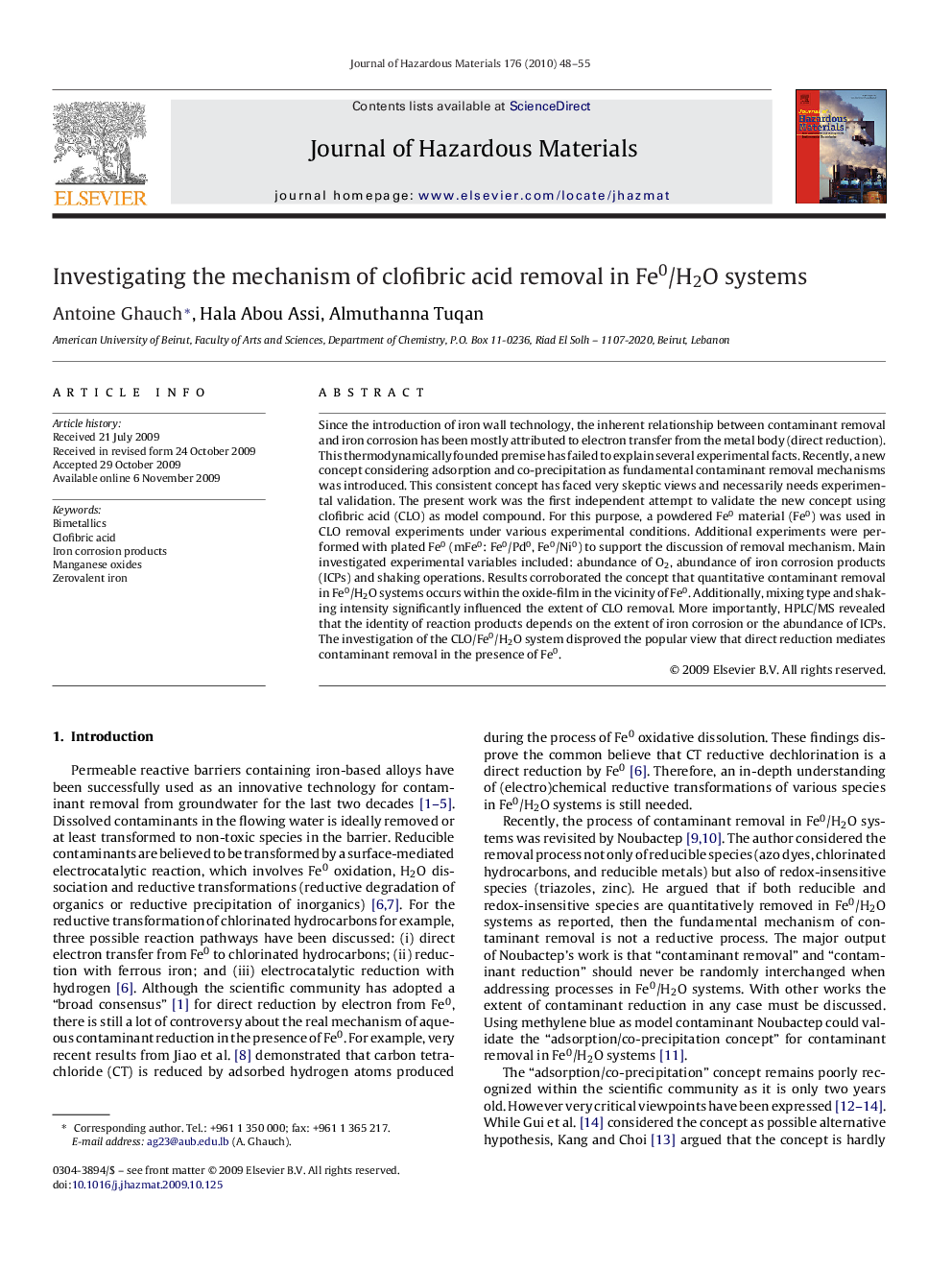| Article ID | Journal | Published Year | Pages | File Type |
|---|---|---|---|---|
| 580533 | Journal of Hazardous Materials | 2010 | 8 Pages |
Abstract
Since the introduction of iron wall technology, the inherent relationship between contaminant removal and iron corrosion has been mostly attributed to electron transfer from the metal body (direct reduction). This thermodynamically founded premise has failed to explain several experimental facts. Recently, a new concept considering adsorption and co-precipitation as fundamental contaminant removal mechanisms was introduced. This consistent concept has faced very skeptic views and necessarily needs experimental validation. The present work was the first independent attempt to validate the new concept using clofibric acid (CLO) as model compound. For this purpose, a powdered Fe0 material (Fe0) was used in CLO removal experiments under various experimental conditions. Additional experiments were performed with plated Fe0 (mFe0: Fe0/Pd0, Fe0/Ni0) to support the discussion of removal mechanism. Main investigated experimental variables included: abundance of O2, abundance of iron corrosion products (ICPs) and shaking operations. Results corroborated the concept that quantitative contaminant removal in Fe0/H2O systems occurs within the oxide-film in the vicinity of Fe0. Additionally, mixing type and shaking intensity significantly influenced the extent of CLO removal. More importantly, HPLC/MS revealed that the identity of reaction products depends on the extent of iron corrosion or the abundance of ICPs. The investigation of the CLO/Fe0/H2O system disproved the popular view that direct reduction mediates contaminant removal in the presence of Fe0.
Related Topics
Physical Sciences and Engineering
Chemical Engineering
Chemical Health and Safety
Authors
Antoine Ghauch, Hala Abou Assi, Almuthanna Tuqan,
